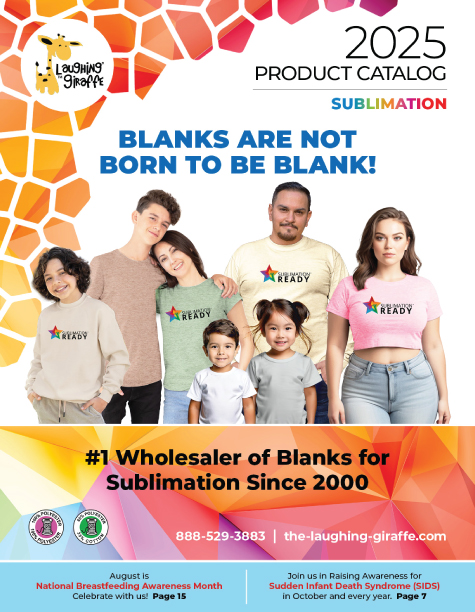When it comes to safe, restful sleep for babies, parents have a lot of choices to make. Baby sleep sacks have gained popularity as a safer alternative to blankets, providing warmth and comfort without the risks associated with loose bedding. In this guide, we’ll walk through some of the most frequently asked questions about sleep sacks to help parents make an informed decision.
What Are the Best Baby Sleep Sacks?
The “best” sleep sack depends on factors like material, design, and safety certifications. Here are some of the most recommended sleep sacks loved by parents:
1. HALO SleepSack: Known for its ultra-soft, breathable fabric, the HALO SleepSack comes in various styles, including swaddleable and wearable blanket options. It’s a popular, reliable choice for infants and toddlers alike.
2. The Laughing Giraffe® Baby Sleep Sack: Offers a soft, breathable fabric designed to provide safe, cozy sleep for little ones. Its versatile blank canvas is ideal for custom personalization with screen printing, embroidery, or sublimation, making it perfect for creating unique designs or branded baby gifts. This sleep sack combines comfort and functionality, offering parents peace of mind and babies a restful night’s sleep.
3. Kyte Baby Sleep Bag: Made from bamboo rayon, this sleep bag is super soft, hypoallergenic, and available in different TOG (Thermal Overall Grade) ratings, which makes it easy to find one suitable for your home’s temperature. It’s an ideal option for babies with sensitive skin.
4. Woolino 4-Season Baby Sleep Bag: Woolino’s Merino wool sleep sack adjusts naturally to temperature changes, keeping babies cozy in winter and cool in warmer months. This makes it a great year-round sleep sack.
5. Nested Bean Zen Sack: This unique sleep sack has a lightly weighted pad on the chest, designed to mimic a parent’s touch, which can help soothe some babies and improve sleep quality.
Each of these options caters to different needs, whether you’re looking for a versatile year-round choice, extra softness, or a specific swaddle design.
Which Sleep Sacks Are Best for Each Age?
Not all sleep sacks are one-size-fits-all, and some work better at specific stages in your baby’s life. Here’s a breakdown to guide you:
- For Newborns (0-3 months): Newborns often sleep best with a swaddling option. The HALO SleepSack Swaddle and Love to Dream Swaddle UP are great choices because they allow the baby’s arms to be snug or free, helping with that transition period from the womb to the world.
- For 3-6 months: Once babies begin rolling over, a sleep sack without swaddle wings is ideal. Look for a sleep sack that allows arm movement while keeping the body warm, such as the Kyte Baby Sleep Bag or the HALO SleepSack wearable blanket.
- For 6-12+ months: Babies become more active sleepers at this age. The Woolino or Burt’s Bees Baby sleep sacks provide warmth without restricting leg movement, which is ideal as they grow more mobile.
Choosing the right sleep sack for your child’s age ensures both safety and comfort, making for a more restful night.
What Is the Best Material for a Baby Sleep Sack?
Material is a critical factor in choosing a sleep sack. Here are the most common materials and their benefits:
- Cotton: Soft and breathable, cotton is a classic choice. It’s ideal for moderate to warm climates and is usually easy to wash, making it convenient for daily use.
- Bamboo Rayon: Hypoallergenic and moisture-wicking, bamboo is incredibly soft and especially suited for babies with sensitive skin. The lightweight nature of bamboo also makes it comfortable in all seasons.
- Merino Wool: Wool is naturally temperature-regulating, which keeps babies comfortable regardless of season. Merino wool is a favorite for colder climates and works well for parents who want a natural, year-round sleep sack.
- Polyester Fleece: Fleece can be warm and cozy in colder temperatures but lacks the breathability of natural fibers, so it’s best suited for colder nights.
Parents in warmer climates may want to prioritize materials like cotton and bamboo rayon, while those in colder regions often find Merino wool’s temperature regulation ideal.
What Is the Best Age for a Baby to Use a Sleep Sack?
Sleep sacks can typically be used as early as 3 months and continue through 24 months or beyond. After the swaddling phase, which often ends around 2-3 months, sleep sacks provide a safe, comforting alternative, giving babies freedom of movement without the dangers associated with loose blankets.
From 3-12 months, babies get the most benefit from sleep sacks, as they are too young to manage blankets but still need warmth and security. Some toddlers even prefer sleep sacks beyond 12 months, enjoying the coziness and consistency they provide.
Are Sleep Sacks Safe for Babies?
Yes, sleep sacks are widely regarded as a safe option for infant sleep, and many pediatricians recommend them over loose blankets, which can pose risks for suffocation. However, it’s essential to follow these guidelines:
- Choose the Right Fit: Sleep sacks should fit snugly around the chest while leaving room for the baby to kick and move their legs. Too large, and the baby could slip down inside; too tight, and it might restrict breathing.
- Opt for Breathable Materials: Avoid overheating by choosing materials that suit the room temperature, such as breathable cotton or bamboo.
- Follow Age and Weight Recommendations: Most sleep sacks come with guidelines for age and weight, which help ensure proper fit and safety.
Using sleep sacks properly allows parents to create a safe, comfortable environment for their babies to sleep in peace.
Final Thoughts
Baby sleep sacks are a wonderful tool for parents seeking safe, cozy sleep solutions for their children. By choosing the right sleep sack for your baby’s age, climate, and comfort needs, you can help them get the quality sleep they need to grow and thrive.

